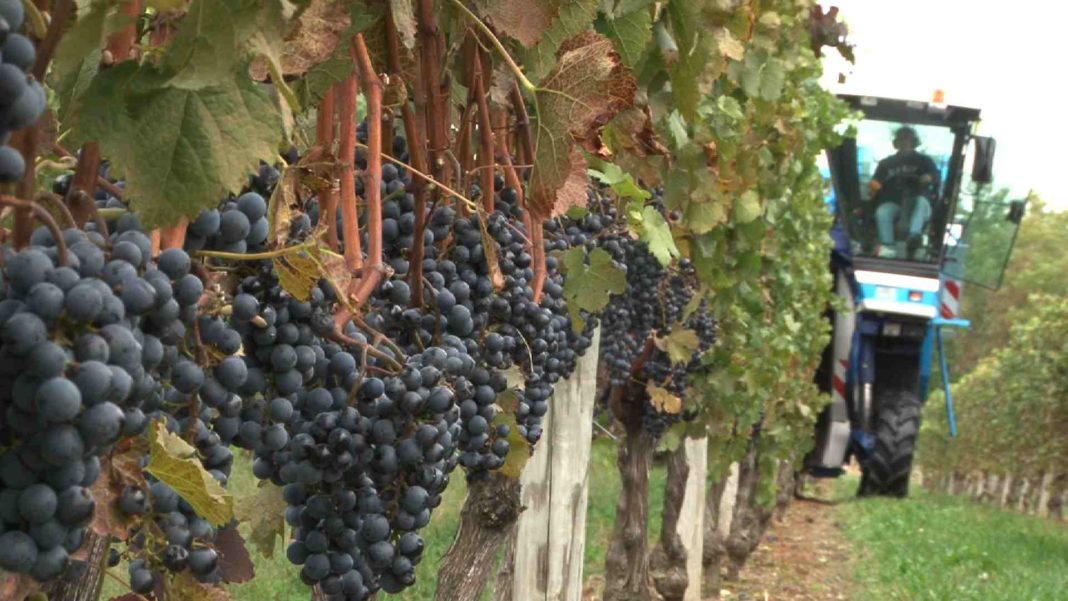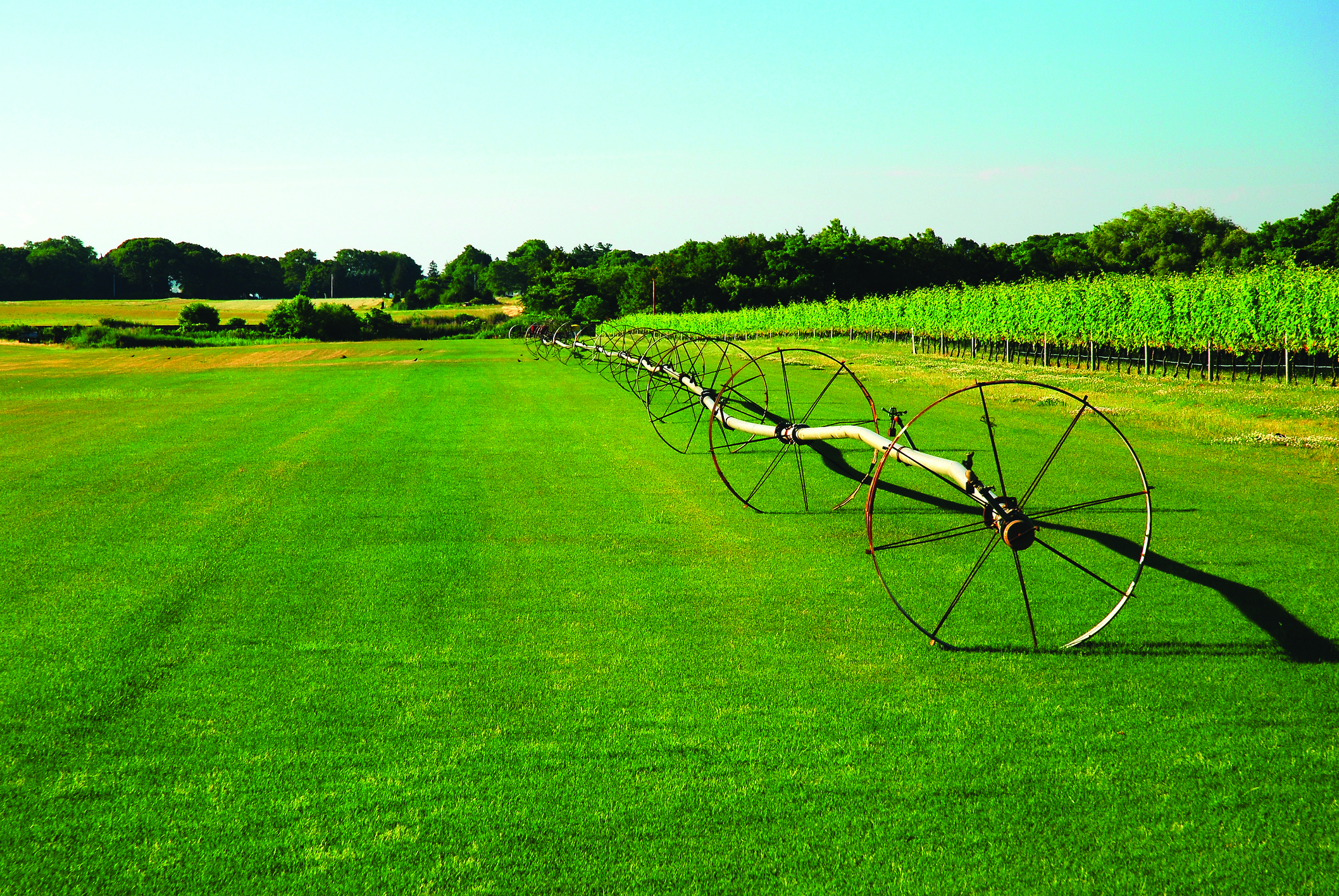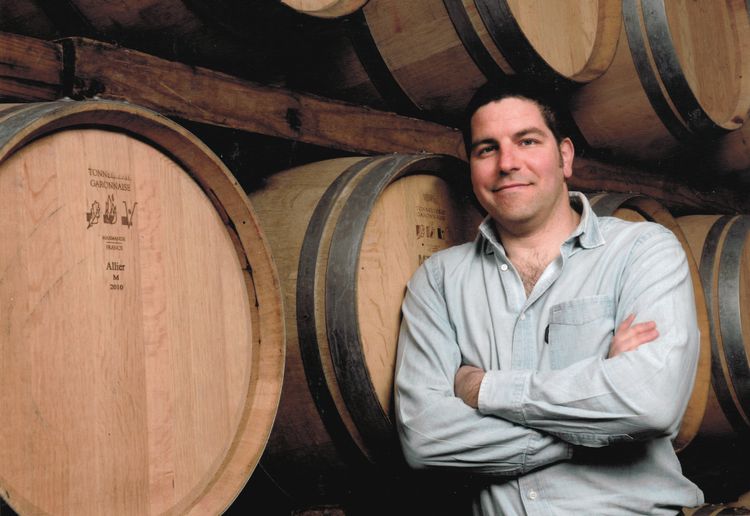Slim Pickings? How the Drought May Impact Fall Harvest on the East End

An ongoing drought impacting the East End may have a ripple effect on locally grown produce as peak autumn harvest season approaches at farms in the Hamptons and on the North Fork.
The impact could be felt across the spectrum of crops grown on the Twin Forks, like vegetables such as Long Island’s ever-popular sweet corn producing smaller-than-usual ears. But fruits such as the grapes that fuel the region’s dozens of wineries, and herbs like recreational cannabis — the newest addition to the New York State agricultural industry — are faring well amid the dry spell.
“The dry weather remains a concern for farmers on Long Island and across the state,” said Steve Ammerman, the spokesman for the New York Farm Bureau, an Albany-based trade group. “The dry weather can affect the overall size of fruits and vegetables, but it can still mean high-quality products in terms of taste and look. Farms are also needing to turn more to irrigation if they have the ability, though that comes with increased production costs to run the irrigation pumps.”
Suffolk County typically receives 11.28 inches of precipitation for meteorological summer — the months of June, July and August — but has only had 4.75 inches as of August 30, according to the National Weather Service (NWS). That makes this summer the fourth driest since local weather record keeping began in 1964. The U.S. Drought Monitor has placed the South Shore of Long Island under severe drought conditions while the North Shore is considered a moderate drought.
“We’re in a 6-inch deficit,” said Upton-based NWS meteorologist Matthew Wunsch, who noted that the forecast didn’t suggest the drought would end anytime soon. “If you get 6 inches of rain in a day, it isn’t necessarily going to get rid of your drought conditions because most of that water is going to run off and not be soaked into the soil … What you need for drought relief is more of a prolonged light to moderate rain over a couple of day period. It can’t all come at once.”

Irrigation and the Drought
While farmers have been strategically deploying irrigation systems to mitigate the effects of the drought, the Suffolk County Water Authority (SCWA) — which issued a Stage 1 Water Emergency Alert in the towns of Southampton, Southold, East Hampton and Shelter Island — says the conditions nonetheless put crops at risk.
“We don’t have advisories directly to the farmers, but I would encourage them to work closer with us and regularly test and monitor the chloride (salinity) levels of their wells,” said SCWA Director of Strategic Initiatives/Lead Hydrogeologist Ty Fuller. “Over pumping can increase chlorides, and at a high enough level, it could kill crops.”
The season has so far produced mixed results for Marcos Ribeiro of East End Flower Farm, who grows everything from vegetables such as cucumbers, peas and lettuce to — as the name suggests — flowers. He is among the dozen local farmers to be awarded a conditional cannabis cultivation license.
“It is having an impact on our sunflowers,” one of his farm’s mainstays, said Ribeiro, noting that the typically huge flowers were smaller this season due to the drought. “For my sunflowers, I irrigate, but I wish it’d rained more because when it doesn’t rain, it’s just much more work for me.”
Talking from his maintenance barn in Mattituck, he noted that he gave his first try this year at growing corn on dry land, meaning without irrigation, but the crop did “terrible.” Growing vegetables without irrigation is nearly impossible in a normal year, let alone in a drought, he said.
“Anybody that does vegetables commercially has some sort of irrigation set up,” he said. “It would be very, very hard to do crops without irrigation in place. It would be quite the risk.”
But even the irrigation systems are strained under the current conditions.
“One of the things I have noticed on a couple of the wells on different properties is that it takes longer for the water to come up,” Ribeiro said. “That just means that the water table is definitely lower.”
The cannabis crops, however, are benefitting from the drought, as too much rain can cause mold on the plants, which only require about an inch of rain per week.
“It’s a double-edged sword for me,” Ribeiro said. “I’m (more) OK — I know this is greedy — if it continues in this fashion than I would be if it just starts raining every other day until October.”

Vineyards May Benefit from Drought
Marijuana isn’t the only crop grown locally that does well in a drought. Kareem Massoud, the winemaker at Paumanok and Palmer Vineyards, and president of Long Island Wine Country, said the lack of rain actually makes for a better vintage.
“Because of the dry weather, the berry size is going to be, on average, smaller and potentially significantly smaller than usual,” Massoud said. “The grapes are essentially dehydrated due to the lack of water. That means everything else that’s in there is more concentrated. The sugar, the flavor, the acidity, the aroma, the color. Everything is more intense. So from a quality standpoint, that’s highly desirable.”
For local winemakers that prioritize quantity over quality — there are some that sell wine by the keg to local restaurants — the conditions are not ideal, but in Massoud’s case, it’s perfect.
“We’re trying not to get too excited,” Massoud said. “Grapes love sunny, dry, breezy weather. And we’re on Long Island, it’s usually breezy, we’ve had a great deal of sun and if you’ve been on the East End this summer, you know that it’s been extremely dry.”
He notes that vineyards will irrigate from time to time, but don’t need to do so as often as other crops. By all accounts, local sod farmers lead the way in the irrigation department. But for winemakers, the drought positively impacts the wine’s terroir, a French term that refers to the primary impacts of what determines the character of a grape: the soil, climate and human caretaker.
“There’s a very high correlation between water deficit and quality,” he said. “And by water deficit we mean lack of rain.”
Most of the best vintages of the French wine Bordeaux — an international reference point for fine wine — were very dry seasons, he said. Locally, one of the best vintages he recalls is 1995, the same year a drought led to the Sunrise Fires that burned thousands of acres.
“So whenever we have a very dry season, we’re similarly very excited,” he said. “It’s not a guarantee of quality, but it’s highly correlated with quality.”
Of course, with climate change fueling whiplash-inducing extreme weather events — recent floods amid the prolonged drought in the West among the latest examples — farming is arguably the most precarious of weather-dependent industries.
“My father has a saying, ‘You can’t take it to the bank until it’s in the tank,’” Massoud said. “In farming, you don’t have a crop until your crop is in the barn or, in this case, in the winery. And even then things can go wrong. We get pretty superstitious.”
But Ribeiro, the flower farmer, remains cautiously optimistic.
“Obviously hail could come in the next 30 minutes and destroy my season, but so far so good and the crop is doing better than I expected,” he said. “So far so good.”



